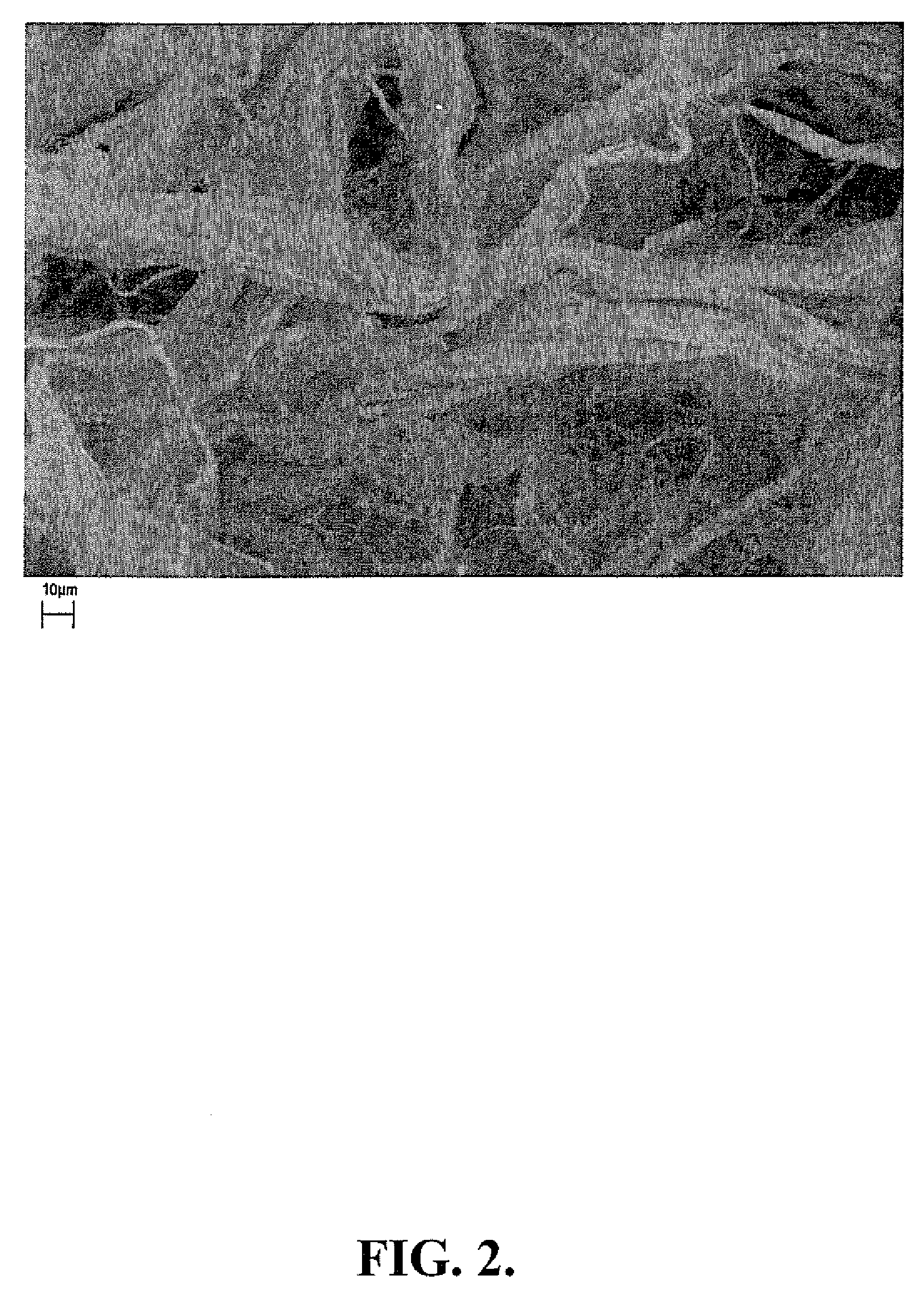Mixed polymer superabsorbent fibers
- Summary
- Abstract
- Description
- Claims
- Application Information
AI Technical Summary
Benefits of technology
Problems solved by technology
Method used
Image
Examples
example 1
The Preparation of Representative Mixed Polymer Composite Fibers: Aluminum Sulfate and Boric Acid / Aluminum Sulfate and Boric Acid Crosslinking
[0107]In this example, the preparation of representative mixed polymer composite fibers crosslinked with aluminum sulfate / boric acid and aluminum sulfate is described.
[0108]A solution of CMC 9H4F 10.0 g OD in 900 ml deionized (DI) water was prepared with vigorous stirring to obtain a CMC solution. (0.6 g) was dissolved in 50 ml DI water and mix well with the CMC solution. The solution was stirred for one hour to allow complete mixing of the two polymers.
[0109]The polymer mixture was blended in the blender for 5 minutes. Fully dissolve boric acid 0.1 g in 30 ml DI water. Weigh 0.6 g aluminum sulfate octadecahydrate and dissolve in 20 ml DI water. Transfer boric acid solution and aluminum sulfate solution to the polymer solution and blend for 5 minutes to mix to provide a gel. Leave the gel at ambient temperature (25 C) for one hour. Transfer th...
example 2
The Preparation of Representative Mixed Polymer Composite Fibers: Aluminum Sulfate and Boric Acid / Aluminum Sulfate and Boric Acid Crosslinking
[0111]In this example, the preparation of representative mixed polymer composite fibers crosslinked with aluminum sulfate / boric acid and aluminum sulfate / boric acid is described. A solution of CMC 9H4F (5.0 g OD) in 450 ml deionized water was prepared with vigorous stirring to obtain a CMC solution. (0.3 g) was dissolved in 25 ml DI water mixed with the CMC solution. The solution was stirred for one hour to allow complete mixing of the two polymers.
[0112]The polymer mixture was blended in the blender for 5 minutes. Fully dissolve boric acid 0.05 g in 15 ml DI water. Weigh 0.2 g aluminum sulfate octadecahydrate and dissolve in 10 ml DI water. Transfer boric acid solution and aluminum sulfate solution to the polymer solution and blend for 5 minutes to mix well. Leave the gel at ambient temperature (25° C.) for one hour. Transfer the gel into a d...
example 3
The Preparation of Representative Mixed Polymer Composite Fibers: Aluminum Sulfate / Aluminum Sulfate Crosslinking
[0113]In this example, the preparation of representative mixed polymer composite fibers crosslinked with aluminum sulfate and aluminum sulfate is described.
[0114]A solution of CMC 9H4F (5.0 g OD) in 450 ml deionized water was prepared with vigorous stirring to obtain a CMC solution. (0.3 g) was dissolved in 25 ml DI water and mixed with the CMC solution. The solution was stirred for one hour to allow complete mixing of the two polymers.
[0115]The polymer mixture was blended in the blender for 5 minutes. Weigh 0.3 g aluminum sulfate octadecahydrate and dissolve in 25 ml DI water. Transfer aluminum sulfate solution to the polymer solution and blend for 5 minutes to mix well. Leave the gel at ambient temperature (25° C.) for one hour. Transfer the gel into a Hobart type blender with 1.5 liters of denatured ethanol. Mix for 15 minutes (anchor type blades) and filter the precipi...
PUM
| Property | Measurement | Unit |
|---|---|---|
| Fraction | aaaaa | aaaaa |
| Percent by mass | aaaaa | aaaaa |
| Percent by mass | aaaaa | aaaaa |
Abstract
Description
Claims
Application Information
 Login to View More
Login to View More - R&D
- Intellectual Property
- Life Sciences
- Materials
- Tech Scout
- Unparalleled Data Quality
- Higher Quality Content
- 60% Fewer Hallucinations
Browse by: Latest US Patents, China's latest patents, Technical Efficacy Thesaurus, Application Domain, Technology Topic, Popular Technical Reports.
© 2025 PatSnap. All rights reserved.Legal|Privacy policy|Modern Slavery Act Transparency Statement|Sitemap|About US| Contact US: help@patsnap.com



